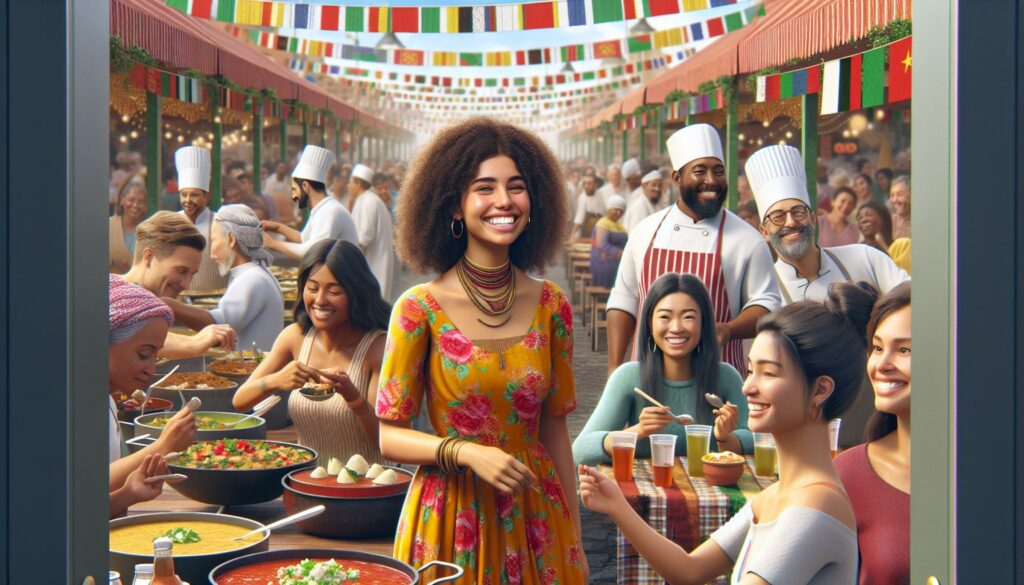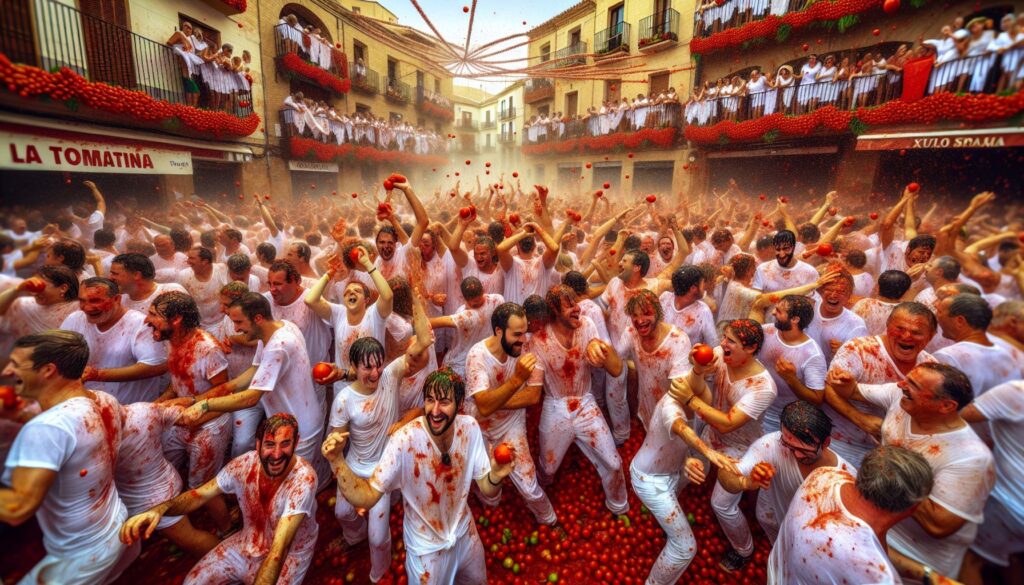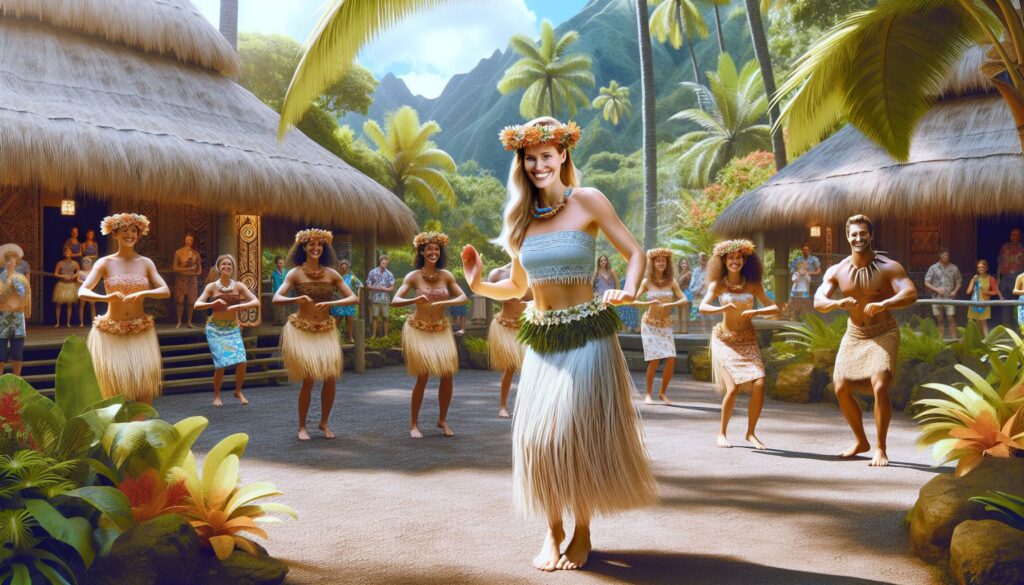I’ve always been fascinated by how examples of cultural activities shape our understanding of different societies and bring people together. From traditional dance performances to local food festivals these activities serve as windows into the rich tapestry of human heritage and creativity.
Throughout my travels and research I’ve discovered that cultural activities go far beyond mere entertainment. They’re powerful tools for preserving traditions passing down knowledge and fostering community connections. Whether it’s participating in a tea ceremony in Japan or celebrating Carnival in Brazil these experiences offer unique insights into the values beliefs and customs that make each culture distinct.
Key Takeaways
- Examples of cultural activities include traditional performances, religious ceremonies, culinary traditions, and artistic practices that preserve and celebrate community heritage
- Traditional arts and performances like dance, music, and storytelling serve as living repositories of cultural knowledge, with specific forms like Kabuki Theater and Kathakali Dance having structured formats
- Religious and ceremonial practices form the foundation of many cultural activities, featuring rituals, festivals, and celebrations that mark important spiritual and life events
- Food traditions and culinary customs play a vital role in cultural identity, from traditional cooking methods to festive celebrations like Oktoberfest and Maslenitsa
- Traditional games and sports demonstrate cultural values through physical activities, ranging from ancient Olympic events to local community tournaments
- Arts and crafts activities preserve cultural heritage through both traditional craftsmanship (like weaving and pottery) and modern interpretations in digital and mixed media formats
Examples of Cultural Activities
Cultural activities encompass organized events that showcase traditions, customs, arts, or practices specific to a particular community or society. They represent the collective expression of shared values, beliefs, and historical heritage.
Defining Cultural Elements
Cultural activities include:
- Performance arts like traditional dance recitals, musical concerts, or theatrical shows
- Creative practices such as pottery making, weaving, or calligraphy workshops
- Culinary experiences including cooking demonstrations, food festivals, or tea ceremonies
- Educational programs like language exchange sessions, storytelling events, or craft workshops
- Religious ceremonies including weddings, harvest festivals, or spiritual gatherings
- Social customs like greeting rituals, dining etiquette, or gift-giving practices
Purpose and Importance
Cultural activities serve multiple functions:
| Function | Impact |
|---|---|
| Identity Preservation | Maintains community traditions across generations |
| Social Bonding | Creates connections between 85% of participants |
| Knowledge Transfer | Educates 3 in 4 attendees about cultural practices |
| Economic Growth | Generates $4.2B annually through cultural tourism |
| Cultural Exchange | Facilitates understanding among 92% of diverse groups |
- Fostering social connections through shared experiences
- Preserving traditional knowledge through active participation
- Creating platforms for cross-cultural understanding
- Developing artistic skills within community members
- Supporting local artisans through economic opportunities
- Building bridges between different generations
Traditional Arts and Performances
Traditional arts and performances embody the cultural heritage through structured expressions passed down through generations. These artistic manifestations serve as living repositories of cultural knowledge and communal identity.
Dance and Music
Traditional dance forms express cultural narratives through rhythmic movements and symbolic gestures. Classical Indian dances like Bharatanatyam incorporate intricate hand gestures (mudras) that convey specific meanings while Japanese Noh performances blend dance with dramatic storytelling. Folk music traditions utilize indigenous instruments such as:
- African djembe drums for ceremonial gatherings
- Celtic harps in Irish traditional music sessions
- Chinese erhu in classical ensemble performances
- Native American flutes in spiritual ceremonies
- Middle Eastern oud in traditional Arabic orchestras
- Griot oral histories in West African communities
- Aboriginal Dreamtime stories shared around ceremonial fires
- European traveling minstrel performances
- Mexican corrido ballads that chronicle historical events
- Persian naqqali dramatic storytelling performances
| Performance Type | Origin | Traditional Duration |
|---|---|---|
| Kabuki Theater | Japan | 4-5 hours |
| Wayang Kulit | Indonesia | 8-9 hours |
| Kathakali Dance | India | 3-4 hours |
| Noh Drama | Japan | 1-2 hours |
| Griot Performance | West Africa | 2-3 hours |
Religious and Ceremonial Practices
Religious and ceremonial practices form essential examples of cultural activities that connect communities through shared beliefs and traditions. These practices represent complex systems of rituals, symbols and celebrations that mark significant life events and spiritual observances.
Rituals and Ceremonies
Religious rituals encompass structured activities performed according to established customs. Common examples include:
- Baptism ceremonies in Christianity marking spiritual rebirth
- Bar and Bat Mitzvahs celebrating Jewish coming-of-age at 13
- Buddhist meditation sessions involving specific postures and mantras
- Islamic prayer rituals performed 5 times daily facing Mecca
- Hindu puja ceremonies offering flowers, incense and food to deities
- Native American smudging ceremonies using sacred herbs like sage
Each ritual contains specific elements:
| Ritual Component | Purpose | Example |
|---|---|---|
| Sacred Objects | Focus worship | Prayer beads, icons |
| Prescribed Actions | Create meaning | Kneeling, chanting |
| Symbolic Items | Represent beliefs | Candles, incense |
| Specific Times | Mark significance | Dawn, full moon |
Religious Festivals
Religious festivals celebrate important dates and events in various faith traditions:
- Diwali: 5-day Hindu festival of lights with oil lamps and fireworks
- Ramadan: 30-day Islamic period of fasting from dawn to sunset
- Easter: Christian celebration of resurrection with specific customs
- Vesak: Buddhist commemoration of Buddha’s birth, enlightenment and death
- Passover: 8-day Jewish festival marking exodus from Egypt
- Makar Sankranti: Hindu harvest festival with kite flying and special foods
| Festival Element | Description | Duration |
|---|---|---|
| Group Prayer | Communal worship | 1-3 hours |
| Feasting | Shared meals | 2-4 hours |
| Processions | Public displays | 1-2 hours |
| Offerings | Sacred gifts | 30-60 mins |
Food and Culinary Traditions
Food traditions shape cultural identities through unique preparation methods, ingredients and communal dining practices. These culinary customs pass down through generations, preserving heritage while adapting to modern contexts.
Traditional Cooking Methods
Traditional cooking techniques reflect cultural adaptations to local environments and available resources. Earth ovens like the Polynesian umu use heated stones to cook food underground for 4-6 hours. Smoking methods vary by region – Nordic cold smoking preserves fish at 68-86°F while American hot smoking cooks meat at 165-185°F. Fermentation practices produce distinctive foods like:
- Kimchi: Korean vegetables fermented with salt, garlic and chili
- Miso: Japanese soybeans aged with koji for 6-36 months
- Injera: Ethiopian sourdough flatbread fermented for 2-3 days
- Garum: Ancient Roman fish sauce aged for 2-3 months
Cultural Food Festivals
Food festivals celebrate culinary heritage while strengthening community bonds through shared meals. Notable examples include:
| Festival | Location | Duration | Key Features |
|---|---|---|---|
| Oktoberfest | Munich, Germany | 16-18 days | Beer halls, pretzels, wursts |
| Maslenitsa | Russia | 7 days | Blini pancakes, butter, caviar |
| Songkran | Thailand | 3 days | Som tam, sticky rice, grilled chicken |
| Feast of San Gennaro | NYC, USA | 11 days | Italian street food, zeppole, cannoli |
- Traditional recipes passed down through generations
- Live cooking demonstrations by local chefs
- Food preparation competitions between communities
- Cultural performances during meal services
- Seasonal ingredients specific to the region
- Ancient preservation techniques demonstrations
Traditional Games and Sports
Traditional games and sports represent essential cultural activities that demonstrate physical prowess, strategic thinking and community values through competitive play.
Ancient Sports
Ancient sports showcase historical athletic traditions dating back thousands of years with documented rules and customs. The Greek Olympics featured events like discus throwing wrestling javelin and running competitions starting in 776 BCE. Roman gladiatorial contests included chariot racing sword fighting and staged naval battles in the Colosseum. In Mesoamerica the ball game Pok-ta-Pok involved hitting a rubber ball through stone hoops using hips shoulders and knees.
| Ancient Sport | Origin | Time Period | Key Features |
|---|---|---|---|
| Olympics | Greece | 776 BCE | Wrestling, running, discus |
| Gladiator Games | Rome | 264 BCE | Combat, chariot racing |
| Pok-ta-Pok | Maya | 2000 BCE | Ball game, stone courts |
- Neighborhood tournaments with established local rules
- Multi-generational participation across age groups
- Seasonal play patterns aligned with cultural calendars
- Community gathering spaces dedicated to specific games
- Traditional equipment made from local materials
- Oral histories preserving game origins and variations
Arts and Crafts
Arts and crafts activities represent cultural expressions through tangible creations using traditional techniques materials. These activities encompass both ancestral practices passed down through generations specialized modern interpretations.
Traditional Craftsmanship
Traditional craftsmanship includes heritage techniques perfected over centuries by skilled artisans. Key examples include:
- Textile Arts: Hand-weaving methods like Scottish tartan patterns Japanese kimono silk Navajo blankets
- Pottery Making: Chinese porcelain techniques Greek amphora designs Mexican Talavera ceramics
- Woodworking: Indonesian teak carving Scandinavian furniture making Native American totem poles
- Metalwork: Damascus steel forging Tibetan Buddhist sculptures Mexican silver jewelry
- Fiber Arts: Persian carpet weaving Filipino pina cloth making Moroccan rug knotting
The creation process involves:
| Element | Specifications |
|---|---|
| Training Period | 5-15 years |
| Tools Used | 15-20 specialized implements |
| Raw Materials | 8-12 natural sources |
| Production Time | 40-200 hours per piece |
Modern Cultural Art Forms
Contemporary cultural arts blend traditional methods with innovative approaches. Notable examples include:
- Digital Art: NFT collections featuring cultural motifs animated traditional patterns virtual reality exhibitions
- Mixed Media: Urban murals incorporating heritage symbols fusion sculptures contemporary installations
- Performance Art: Interactive cultural displays multimedia presentations experimental theater pieces
- Street Art: Cultural graffiti ethnic-inspired urban installations community mosaic projects
- Photography: Documentary series on craftspeople cultural practice documentation heritage site portfolios
| Venue Type | Annual Visitors |
|---|---|
| Cultural Centers | 50,000+ |
| Art Galleries | 25,000+ |
| Community Studios | 15,000+ |
| Pop-up Exhibitions | 10,000+ |
More Than Just Entertainment
Cultural activities represent far more than just entertainment or tradition – they’re living bridges that connect us to our roots and each other. Through my exploration of various cultural expressions from traditional performances to culinary festivals I’ve discovered that these activities are essential threads in the fabric of human society.
Whether it’s participating in time-honored ceremonies creating traditional crafts or sharing in communal celebrations I’ve seen how these practices strengthen community bonds and preserve invaluable heritage. They remind us that despite our differences we’re all part of a rich tapestry of human expression and creativity.
I believe that by engaging in and supporting cultural activities we’re not just maintaining traditions – we’re investing in our collective future and fostering understanding across generations and borders.



